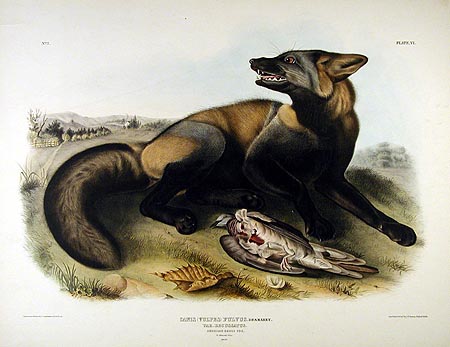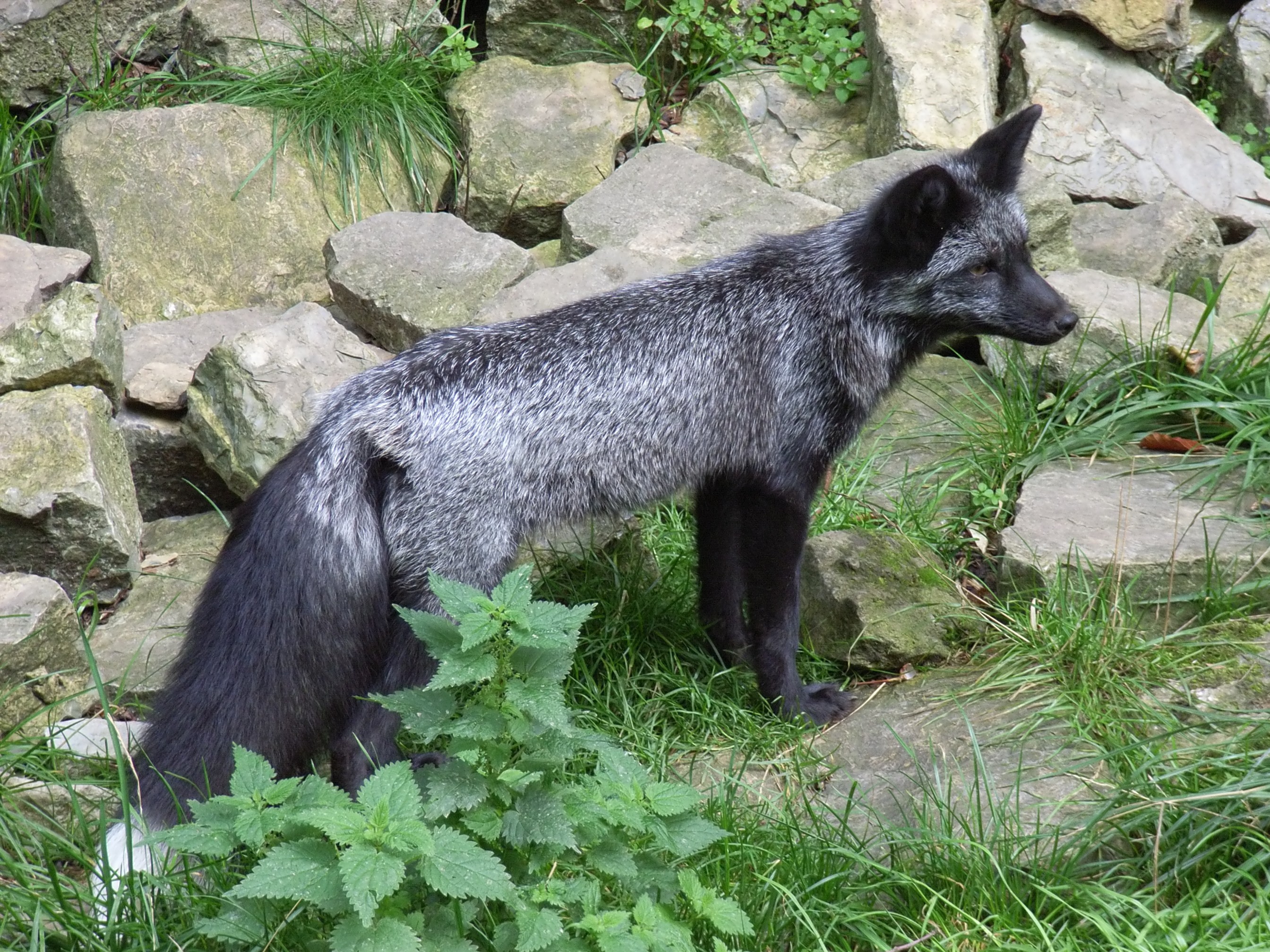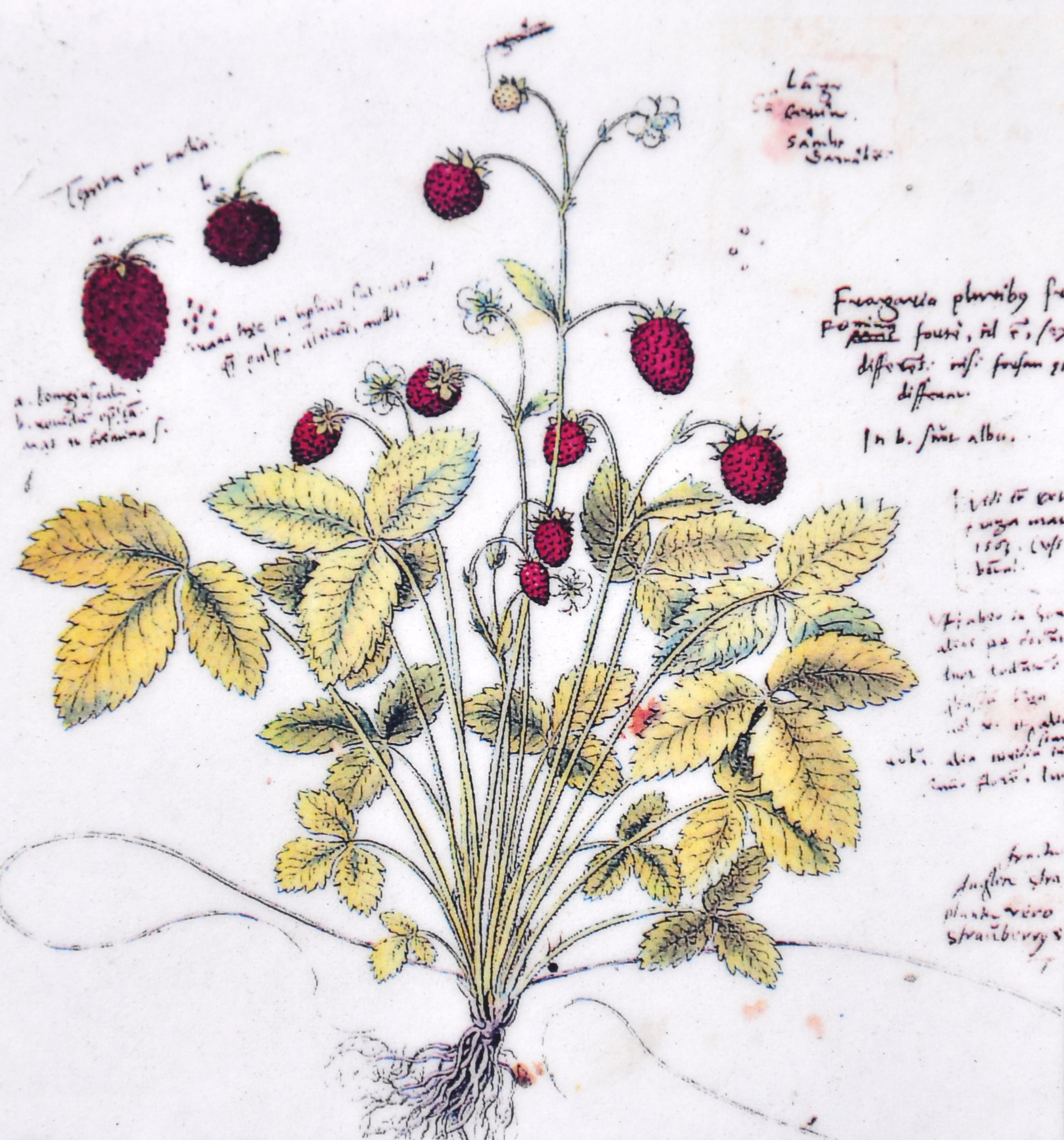|
Cross Fox
The cross fox is a partially melanistic colour variant of the red fox (''Vulpes vulpes'') which has a long dark stripe running down its back, intersecting another stripe to form a cross over the shoulders. It tends to be more abundant in northern regions of Canada, and is rarer than the common red form, but is more common than the even darker silver fox. Taxonomy At one time the cross fox was considered to be a separate species from the red fox, and was given the binomial name ''Canis decassatus'' (the fox genus ''Vulpes'' was then commonly included in the dog genus ''Canis''). Fur farmers and trappers continued to treat each red fox colour form as a distinct species long after scientists concluded that they were variations of the same one. Distribution Cross foxes are relatively common in the northern areas of North America, and comprise up to 30% of Canada's red fox population. [...More Info...] [...Related Items...] OR: [Wikipedia] [Google] [Baidu] |
Melanism
The term melanism refers to black pigment and is derived from the gr, μελανός. Melanism is the increased development of the dark-colored pigment melanin in the skin or hair. Pseudomelanism, also called abundism, is another variant of pigmentation, identifiable by dark spots or enlarged stripes, which cover a large part of the body of the animal, making it appear melanistic. The morbid deposition of black matter, often of a malignant character causing pigmented tumors, is called melanosis. Adaptation Melanism related to the process of adaptation is called adaptive. Most commonly, dark individuals become Fitness (biology), fitter to survive and reproduce in their environment as they are better camouflaged. This makes some species less conspicuous to predators, while others, such as leopards, use it as a foraging advantage during night hunting. Typically, adaptive melanism is Heritability, heritable: A Dominance (genetics), dominant allele, which is entirely or nearly ent ... [...More Info...] [...Related Items...] OR: [Wikipedia] [Google] [Baidu] |
Red Fox
The red fox (''Vulpes vulpes'') is the largest of the true foxes and one of the most widely distributed members of the Order (biology), order Carnivora, being present across the entire Northern Hemisphere including most of North America, Europe and Asia, plus parts of North Africa. It is listed as least concern by the IUCN. Its range has increased alongside human expansion, having been Foxes in Australia, introduced to Australia, where it is considered harmful to native mammals and bird populations. Due to its presence in Australia, it is included on the list of the List of the world's 100 worst invasive species, "world's 100 worst invasive species". The red fox originated from smaller-sized ancestors from Eurasia during the Middle Villafranchian period, and colonised North America shortly after the Wisconsin glaciation. Among the true foxes, the red fox represents a more progressive form in the direction of Carnivore, carnivory. Apart from its large size, the red fox is disting ... [...More Info...] [...Related Items...] OR: [Wikipedia] [Google] [Baidu] |
Silver Fox (animal)
The silver fox is a melanistic form of the red fox (''Vulpes vulpes''). Silver foxes display a great deal of pelt variation. Some are completely glossy black except for a white colouration on the tip of the tail, giving them a somewhat silvery appearance. Some silver foxes are bluish-grey, and some may have a cinereous colour on the sides. Historically, silver foxes were among the most valued fur-bearers, and their pelts were frequently worn by nobles in Russia, Western Europe, and China. Wild silver foxes do not naturally reproduce exclusively with members of the same coat morph and can be littermates with the common red variety, although captive populations bred for their fur and as pets are almost exclusively mated with members of the same colour. Description The silver fox's long outer hair can extend as much as beyond the shorter underfur on different parts of the fox's body, particularly under the throat, behind the shoulders, on the sides and the tail. The hair of the ... [...More Info...] [...Related Items...] OR: [Wikipedia] [Google] [Baidu] |
Binomial Name
In taxonomy, binomial nomenclature ("two-term naming system"), also called nomenclature ("two-name naming system") or binary nomenclature, is a formal system of naming species of living things by giving each a name composed of two parts, both of which use Latin grammatical forms, although they can be based on words from other languages. Such a name is called a binomial name (which may be shortened to just "binomial"), a binomen, name or a scientific name; more informally it is also historically called a Latin name. The first part of the name – the '' generic name'' – identifies the genus to which the species belongs, whereas the second part – the specific name or specific epithet – distinguishes the species within the genus. For example, modern humans belong to the genus ''Homo'' and within this genus to the species ''Homo sapiens''. ''Tyrannosaurus rex'' is likely the most widely known binomial. The ''formal'' introduction of this system of naming species is credit ... [...More Info...] [...Related Items...] OR: [Wikipedia] [Google] [Baidu] |
Canis
''Canis'' is a genus of the Caninae which includes multiple extant species, such as wolves, dogs, coyotes, and golden jackals. Species of this genus are distinguished by their moderate to large size, their massive, well-developed skulls and dentition, long legs, and comparatively short ears and tails.Heptner, V. G.; Naumov, N. P. (1998). ''Mammals of the Soviet Union'' Vol.II Part 1a, SIRENIA AND CARNIVORA (Sea Cows, Wolves and Bears). Science Publishers, Inc. USA. pp. 124–129. . Taxonomy The genus ''Canis'' (Carl Linnaeus, 1758) was published in the 10th edition of Systema Naturae and included the dog-like carnivores: the domestic dog, wolves, coyotes and jackals. All species within ''Canis'' are phylogenetically closely related with 78 chromosomes and can potentially interbreed. In 1926, the International Commission on Zoological Nomenclature (ICZN) in Opinion 91 included Genus ''Canis'' on its ''Official Lists and Indexes of Names in Zoology''. In 1955, the ICZN's Directi ... [...More Info...] [...Related Items...] OR: [Wikipedia] [Google] [Baidu] |
Cross Fox In Ester Alaska
A cross is a geometrical figure consisting of two intersecting lines or bars, usually perpendicular to each other. The lines usually run vertically and horizontally. A cross of oblique lines, in the shape of the Latin letter X, is termed a saltire in heraldic terminology. The cross has been widely recognized as a symbol of Christianity from an early period.''Christianity: an introduction'' by Alister E. McGrath 2006 pages 321-323 However, the use of the cross as a religious symbol predates Christianity; in the ancient times it was a pagan religious symbol throughout Europe and western Asia. The effigy of a man hanging on a cross was set up in the fields to protect the crops. It often appeared in conjunction with the female-genital circle or oval, to signify the sacred marriage, as in Egyptian amule ... [...More Info...] [...Related Items...] OR: [Wikipedia] [Google] [Baidu] |
Canada
Canada is a country in North America. Its ten provinces and three territories extend from the Atlantic Ocean to the Pacific Ocean and northward into the Arctic Ocean, covering over , making it the world's second-largest country by total area. Its southern and western border with the United States, stretching , is the world's longest binational land border. Canada's capital is Ottawa, and its three largest metropolitan areas are Toronto, Montreal, and Vancouver. Indigenous peoples have continuously inhabited what is now Canada for thousands of years. Beginning in the 16th century, British and French expeditions explored and later settled along the Atlantic coast. As a consequence of various armed conflicts, France ceded nearly all of its colonies in North America in 1763. In 1867, with the union of three British North American colonies through Confederation, Canada was formed as a federal dominion of four provinces. This began an accretion of provinces an ... [...More Info...] [...Related Items...] OR: [Wikipedia] [Google] [Baidu] |
Idaho
Idaho ( ) is a state in the Pacific Northwest region of the Western United States. To the north, it shares a small portion of the Canada–United States border with the province of British Columbia. It borders the states of Montana and Wyoming to the east, Nevada and Utah to the south, and Washington and Oregon to the west. The state's capital and largest city is Boise. With an area of , Idaho is the 14th largest state by land area, but with a population of approximately 1.8 million, it ranks as the 13th least populous and the 7th least densely populated of the 50 U.S. states. For thousands of years, and prior to European colonization, Idaho has been inhabited by native peoples. In the early 19th century, Idaho was considered part of the Oregon Country, an area of dispute between the U.S. and the British Empire. It officially became U.S. territory with the signing of the Oregon Treaty of 1846, but a separate Idaho Territory was not organized until 1863, instead ... [...More Info...] [...Related Items...] OR: [Wikipedia] [Google] [Baidu] |
Utah
Utah ( , ) is a state in the Mountain West subregion of the Western United States. Utah is a landlocked U.S. state bordered to its east by Colorado, to its northeast by Wyoming, to its north by Idaho, to its south by Arizona, and to its west by Nevada. Utah also touches a corner of New Mexico in the southeast. Of the fifty U.S. states, Utah is the 13th-largest by area; with a population over three million, it is the 30th-most-populous and 11th-least-densely populated. Urban development is mostly concentrated in two areas: the Wasatch Front in the north-central part of the state, which is home to roughly two-thirds of the population and includes the capital city, Salt Lake City; and Washington County in the southwest, with more than 180,000 residents. Most of the western half of Utah lies in the Great Basin. Utah has been inhabited for thousands of years by various indigenous groups such as the ancient Puebloans, Navajo and Ute. The Spanish were the first Europe ... [...More Info...] [...Related Items...] OR: [Wikipedia] [Google] [Baidu] |
Scandinavia
Scandinavia; Sámi languages: /. ( ) is a subregion#Europe, subregion in Northern Europe, with strong historical, cultural, and linguistic ties between its constituent peoples. In English usage, ''Scandinavia'' most commonly refers to Denmark, Norway, and Sweden. It can sometimes also refer more narrowly to the Scandinavian Peninsula (which excludes Denmark but includes part of Finland), or more broadly to include all of Finland, Iceland, and the Faroe Islands. The geography of the region is varied, from the Norwegian fjords in the west and Scandinavian mountains covering parts of Norway and Sweden, to the low and flat areas of Denmark in the south, as well as archipelagos and lakes in the east. Most of the population in the region live in the more temperate southern regions, with the northern parts having long, cold, winters. The region became notable during the Viking Age, when Scandinavian peoples participated in large scale raiding, conquest, colonization and trading mostl ... [...More Info...] [...Related Items...] OR: [Wikipedia] [Google] [Baidu] |
Conrad Gessner
Conrad Gessner (; la, Conradus Gesnerus 26 March 1516 – 13 December 1565) was a Swiss physician, naturalist, bibliographer, and philologist. Born into a poor family in Zürich, Switzerland, his father and teachers quickly realised his talents and supported him through university, where he studied classical languages, theology and medicine. He became Zürich's city physician, but was able to spend much of his time on collecting, research and writing. Gessner compiled monumental works on bibliography (''Bibliotheca universalis'' 1545–1549) and zoology (''Historia animalium'' 1551–1558) and was working on a major botanical text at the time of his death from plague at the age of 49. He is regarded as the father of modern scientific bibliography, zoology and botany. He was frequently the first to describe species of plants or animals in Europe, such as the tulip in 1559. A number of plants and animals have been named after him. Life Conrad Gessner was born on 26 March 1516, ... [...More Info...] [...Related Items...] OR: [Wikipedia] [Google] [Baidu] |


.jpg)


.png)



